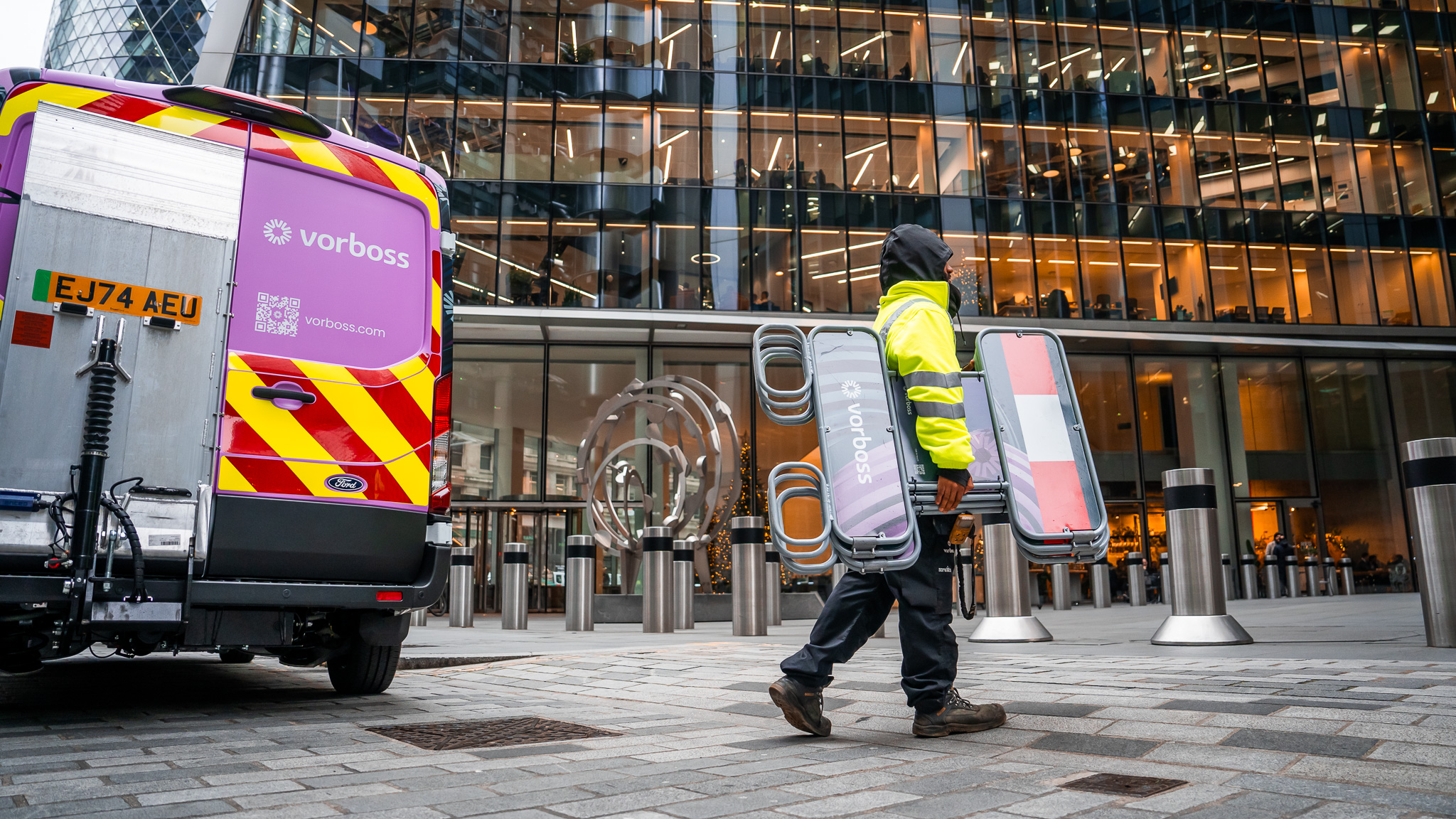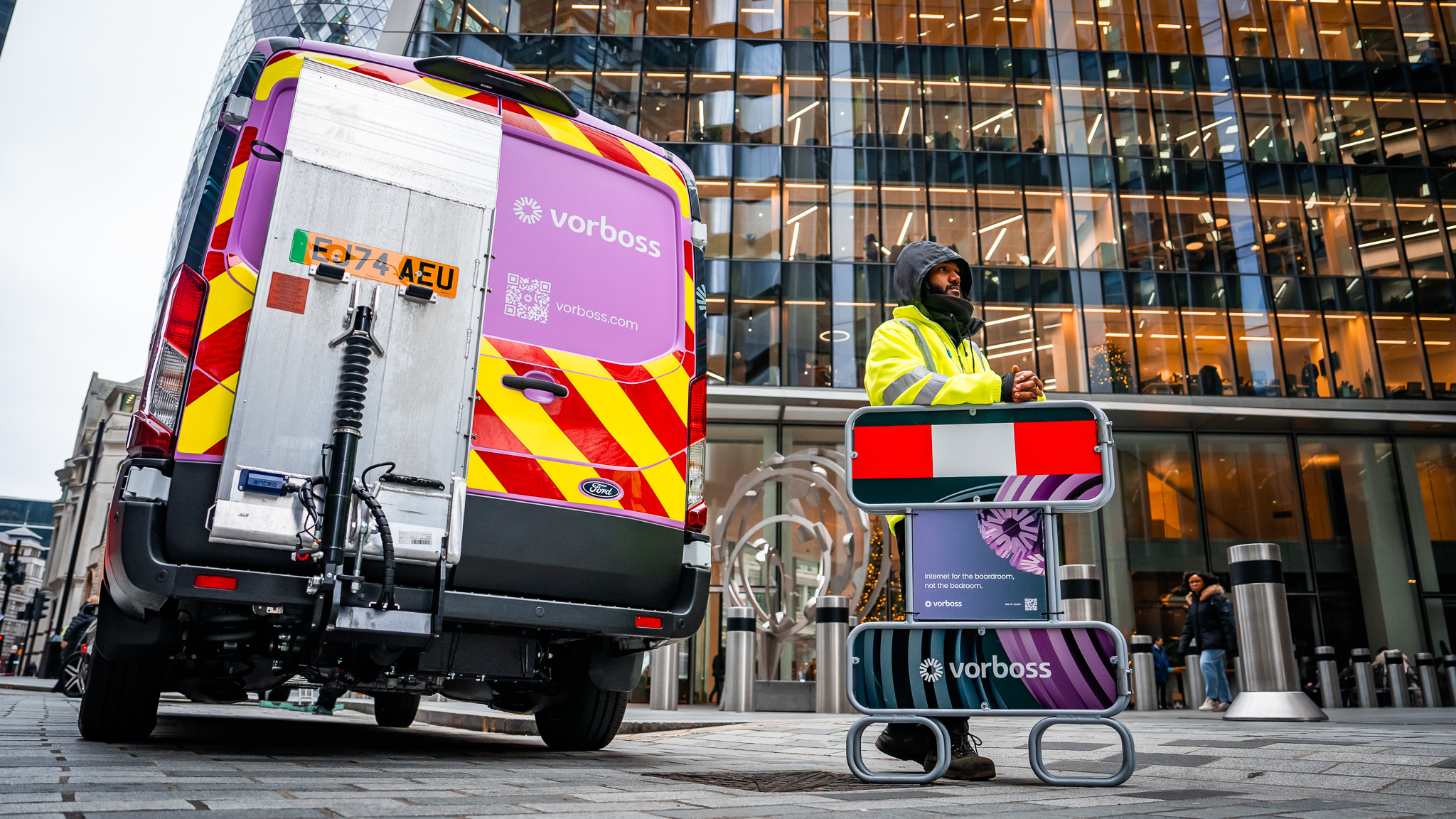
Highlights
Vorboss CEO, Tim Creswick, has been appointed Chair of the Institute of Telecommunications Professionals (ITP) Board. We work with the ITP to address the digital skills gap, creating over 300 jobs for Londoners and launching the Vorboss Academy to enhance industry diversity. We prioritise workplace diversity, with nearly 40% of our field-based Installation Team being women, reflecting a commitment recognised by The Sunday Times.
In an exciting development for the telecommunications industry, our CEO, Tim Creswick, has been appointed as the new Chair of the Board of Directors at the Institute of Telecommunications Professionals (ITP).
This appointment recognises Tim's outstanding leadership in breaking down employment barriers and promoting equity, inclusion, and diversity within telecoms. With Tim leading the way, Vorboss has worked with the ITP over the years to employ apprentices from diverse backgrounds, fostering access and equality on a broader scale in the sector.
As the new ITP Chair, Tim will collaborate with regulators, government associations, and other leading bodies on projects crucial to the industry's future. He will also share best practices with global businesses and educational institutions, amplifying the positive impact of his initiatives.
Let's take a closer look at how Tim and our team at Vorboss are transforming the industry and empowering a new generation of professionals.
Expanding opportunities for Londoners

The ITP is a not-for-profit organisation addressing the UK's digital skills gap. They are changing the telecoms landscape by working with employers and the wider industry to build a sustainable and diverse workforce.
Vorboss aligns with this mission, taking a committed approach to building our team in a way that challenges the status quo. We collaborate with the ITP to tap into diverse talent pools and welcome telecoms industry newcomers, creating over 300 new jobs for Londoners.
Tim and Vorboss feel strongly that anyone with the right attitude should have the opportunity to build a career in telecoms. We’re working hard to break those barriers.
Vorboss Training Academy
The ITP helped us launch the Vorboss Academy in 2021 to increase our intake of apprentices. This accredited in-house programme gives those unfamiliar with telecoms the skills they need to kickstart a career in the industry.
We now have the industry's most diverse fibre installation team; nearly 40% of our field-based Installation Team are women. The ITP's emphasis on developing people and bridging skills gaps has been integral to the growth and success of our field team, with participants gaining qualifications, experience, and a robust professional network.
Diversity and Inclusion at Vorboss

From the beginning, we have been committed to building a workplace that revolves around our people. Our recent recognition by The Sunday Times as one of the best places to work in the UK, especially for women, reflects that.
Diversity and accessibility in telecoms have long been crucial challenges. Tim has advocated for a proactive approach, noting, 'We're only going to change the face of the industry if we continue to attract a diversity of thought and talents in the coming decades.'
Attracting diverse talent is just the beginning; providing a supportive environment where all types of people can grow is vital to breaking barriers in a long-term, sustainable way. Our passionate team has been pivotal in cementing our position as the market leader in fibre connectivity; we firmly believe that people and culture are the bedrock of a thriving business.
Tim's vision
Tim's aim is to inspire change on a broader scale, leveraging his position to promote hiring based on attitude and training skills, as Vorboss has successfully done.
'I'm passionate about improving access, diversity, and equality in a traditionally rather stale sector. While we've been able to make great strides at Vorboss, the ITP role provides an agnostic platform from which I can champion these ideas across the industry, with a far greater reach than we could ever achieve as just one company.'
Stay tuned for more exciting developments as Tim Creswick, Vorboss, and the ITP continue to shape a vibrant and sustainable telecoms industry.
Tell us about yourself so we can serve you best.
Got a question?
More articles

For many landlords and building managers, the word “wayleave” feels like the responsible route whenever a fibre circuit is being installed on their property. It sounds formal and safe – a neat legal box to tick.
In many cases, however, a wayleave adds unnecessary complexity and delays, frustrates tenants, and can expose landlords to long-term legal risks.
At Vorboss, we’ve connected thousands of office spaces across London without a wayleave, keeping landlords in full control and getting tenants online faster.

What is a wayleave?
A wayleave is a written agreement between a landowner and a telecoms operator. It gives the operator permission to install and keep equipment on private property.
What many people don’t realise is that signing a wayleave also activates “Code rights” under the Electronic Communications Code. These rights go beyond simple permission, they give the operator legal powers to stay on the property indefinitely, access it when needed, and even refuse removal of their equipment in certain situations.
For a typical connection into a commercial building in London, a wayleave can make the fibre installation process slower, more expensive, and limit the landlord’s flexibility long term.
Why a wayleave isn’t required for standard in-building fibre connections
For a standard in-building fibre connection serving a tenant, a wayleave isn’t a legal requirement. Important protections, like building access, fire safety, repairing any damage, and removing equipment, are already covered by the tenant’s lease and usual building rules.
If no wayleave is signed, no Code rights are triggered, meaning the landlord retains full control and the installation exists under a simple, fully revocable licence.
In practice, this gives landlords far more protection and flexibility:
- No legal lock-in – the telecoms operator has no long-term rights to stay or refuse removal.
- Landlords keep full control – equipment can be moved or removed when the building changes.
- Faster fibre installation – no time lost in drafting contracts or solicitor reviews.
- Happier tenants – connections go live quicker; tenants get to move in faster.
By contrast, signing a wayleave and granting Code rights introduces a complex and expensive legal process for any fibre removal or relocation. This can take at least 18 months, plus potential court or tribunal proceedings, making it slower, and far less flexible for the landlord.

Public services across central London are evolving, and the City of London Corporation is leading the way.
Whether you work, live or study in the Square Mile, you’ll soon feel the difference that faster, more dependable connectivity brings.

What is the Future Network Programme?
The City of London Corporation is rolling out the Future Network Programme, a major project to modernise its entire digital infrastructure and bring everything under one unified network.
From offices and schools to iconic green spaces like Hampstead Heath, cultural destinations like the Barbican, and historic markets such as Leadenhall and Old Spitalfields, this upgrade will mean more reliable connectivity across the City’s buildings and public spaces.
It also extends to essential services, including critical sites run by the City of London Police. This enhanced connectivity will support everything from secure communication systems to faster, more resilient networks for emergency operations.
Leading this transformation is Roc Technologies, supported by Juniper Networks and Palo Alto Networks; all powered by the Vorboss fibre network. Together, we’re bringing the City onto a modern digital foundation that’s ready to support its future.
Who the Future Network Programme benefits and how?
The programme is designed for everyone who depends on public services in the Square Mile:
- Students in City-run schools will have fast, reliable connectivity to fully access digital learning tools.
- Public-sector teams will experience smoother hybrid working, better access to online platforms, and more efficient collaboration across locations.
- Residents and visitors will see improvements in public Wi-Fi, digital services, and online access in libraries, community hubs, and other shared spaces.
- The City of London Police will gain a more secure, faster and resilient network that enhances CCTV reliability and enables more effective frontline operations.

.avif)

.avif)

